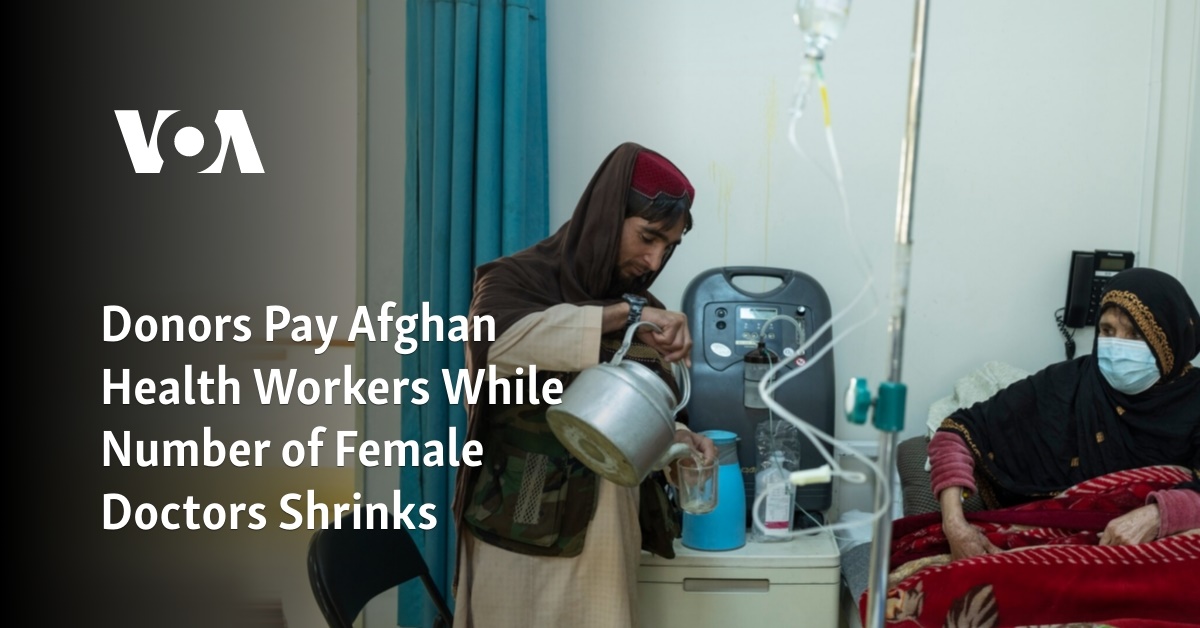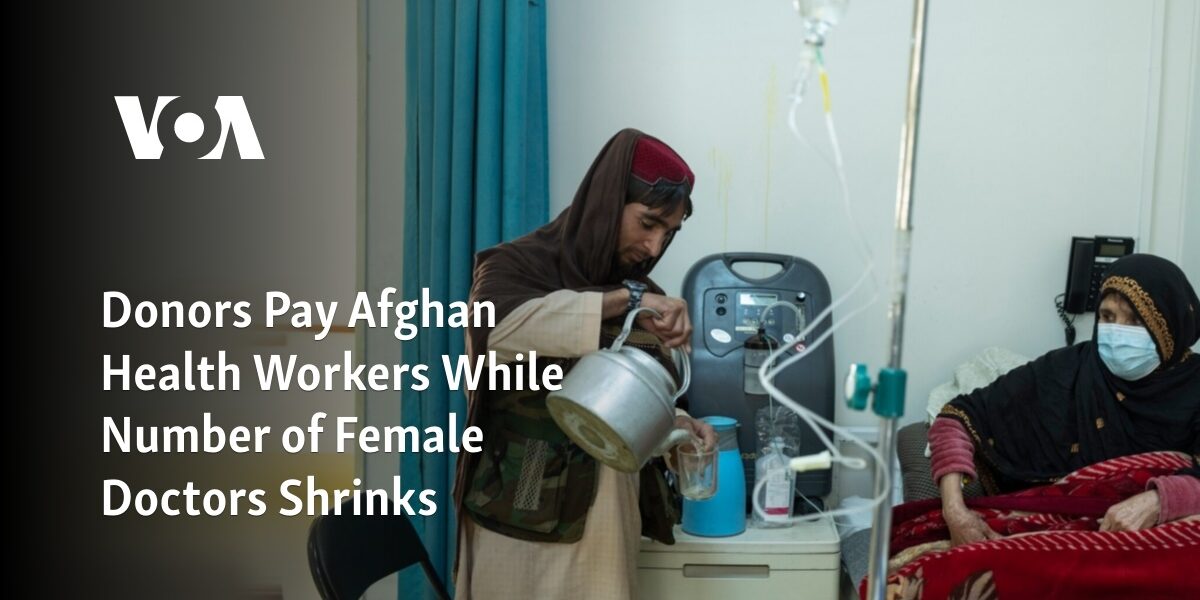The shrinking number of female doctors in Afghanistan is being countered by donors paying health workers.

Following the Taliban’s takeover of Afghanistan in 2021, the country’s public health system has become heavily reliant on foreign aid and assistance. This has included funding health workers and ensuring the operation of hospitals and local health facilities.
The nation’s economy, which relies heavily on donor support, has been on the verge of collapsing due to reduced development aid and sanctions imposed by foreign donors against the Taliban government.
The ICRC provided additional compensation to over 10,000 medical professionals and employees working at 33 hospitals in Afghanistan, serving a population of 26 million.
According to Diogo Alcantara, a spokesperson for ICRC, the organization covered expenses for medication, medical equipment, hospital operations (such as electricity and ambulance services), laboratory tests, and patient meals.
The ICRC program concluded in August, yet the payments funded by donors have persisted.
Currently, the United Nations organization for children, known as UNICEF, is covering the expenses by providing payment for the wages of over 27,000 healthcare staff in Afghanistan. This includes 10,000 female workers.
According to Kate Pond, a spokesperson for UNICEF, the salary payment program plays a crucial role in retaining the health workforce and preventing brain drain in Afghanistan.
UNICEF is deeply worried about the limited availability of healthcare services. That’s why we have implemented measures to ensure that the healthcare system remains functional. We are committed to making sure that essential health services for women, children, and families are accessible throughout Afghanistan,” stated Pond in written remarks to VOA.
The Taliban’s health ministry representatives declined to provide a statement to VOA about how they are using their limited resources for the health sector. The government, which follows the Islamic law, does not publicly reveal its budget and expenses.
Even with financial support from UNICEF, there is an urgent requirement for immediate aid from donors for 36 hospitals that were previously funded by the ICRC to maintain essential services.
Although donors have answered the U.N.’s appeals for humanitarian aid in Afghanistan, only 40% of the necessary $412 million for essential healthcare services in 2023 has been pledged.
The number of female health workers is decreasing.
For many years, Afghanistan has struggled with a notable lack of female healthcare workers, leading to some of the poorest health outcomes for women globally.
Until 2002, the maternal mortality rate in the country was over 1,600 per 100,000 live births. However, it has decreased to 620 in 2020, mainly due to ongoing support from international organizations in terms of technical expertise and financial aid.
Workers providing assistance state that the limitations imposed by the Taliban on educational and employment opportunities for women are causing a regression in the advancements made in Afghanistan’s healthcare industry, particularly for women.
According to an unnamed lecturer at Kabul Medical University, the lack of female doctors in Afghanistan for over a year is a major detriment to the health sector.
Secondary and higher education, as well as medical studies, have been banned for girls by the Taliban. There is no indication of when these restrictions on gender will be lifted.
According to UNICEF’s Pond, there is a lack of skilled healthcare professionals in Afghanistan, particularly among women. This results in some Afghans having to travel far distances to access health care services.
She stated that over 33% of the population do not have access to healthcare services.
Prior to the Taliban’s resurgence in 2021, there were no women serving as doctors in certain rural areas of Afghanistan.
The lecturer stated that if the restriction on women’s education and employment is not removed, there will be no female doctors remaining in Afghanistan in the near future.
Source: voanews.com




